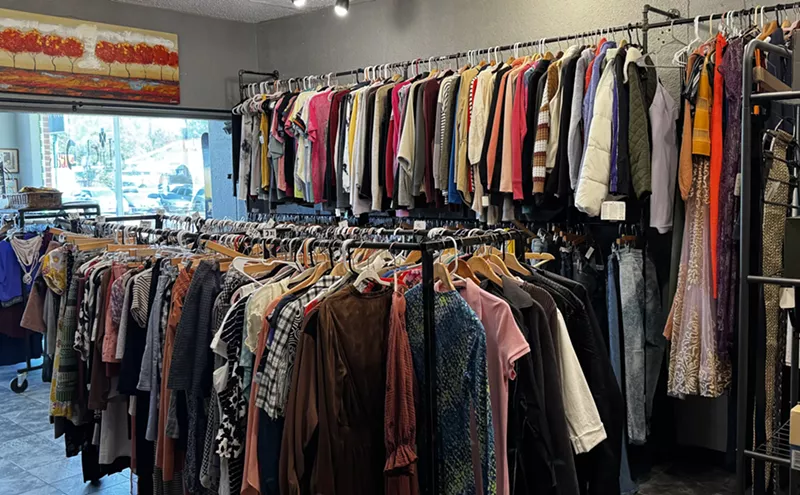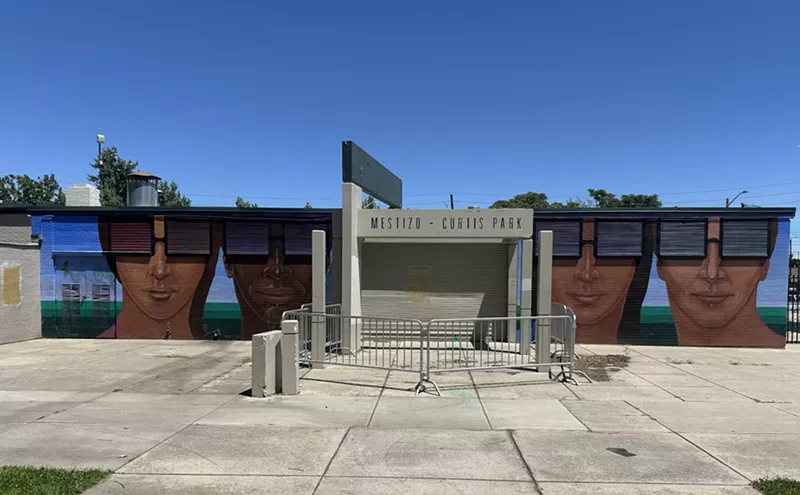Slaby, who started out documenting this stigmatized population, eventually became a board member of the nonprofit, which serves and advocates for opiate users. He sat down with Westword to talk about the exhibit, his work with HRAC and why it is important to advocate for people who are so often stereotyped instead of helped.
See also: Philip Seymour Hoffman, heroin and the secret club of addiction
Westword: Can you talk a little about the exhibition opening at the Capitol today?Matt Slaby: The simple answer is the photographs are meant to humanize a subject that is really hard to humanize. Injection drug use is something that is shrouded in quite a bit of stigma, so much so that we don't really talk about some of the ground-level realities that people face -- people who inject drugs, people who used to inject drugs, their friends, family and by proxy, all of us. For example, in Denver, one out of two injection drug users are Hepatitis C positive and more than one out of ten have HIV, and a significant if not overwhelming majority of long-term injectors have experienced a near-fatal overdose.
All three of those things are one hundred percent preventable with basic changes to how we administer public health. The biggest roadblock preventing some of those changes is public perception that is built around stigma. So the photographs were designed to humanize the issue. They are diptychs -- the left side is a user, recovering user or family of deceased user and the image on the right is the place where they experienced something significant in their healthcare narrative. So, where they overdosed, where they died or where they learned to inject.
When you look at them in sequence, you start to realize that this isn't something that happened somewhere else -- this is something very close to home. It is the people you know and the places you go.
How did you approach your subjects? How did they respond when you wanted to photograph them in that way?
Just like you, I have made my living for the last eight years or so as a journalist, a photojournalist. One of the things I get paid to do is be curious about things that I don't necessarily understand or things that challenge me. This was an issue that was particularly challenging to me. Long ago, in a past life, I worked through an undergrad working with a major metropolitan ambulance company. The population of folks that are highlighted in the series are people that we would see on a fairly regular basis.
During that portion of my life and that job, I felt like the relationship was fairly antagonistic. If you fast-forward about a decade for me, I was again confronted with the same issues. I had had some friends that were involved in the underground needle exchange here in Denver and brought me in to learn a little bit more about the issue. I found that a lot of my stereotypes and a lot of the things that I assumed in my previous line of work didn't necessarily hold true. The things in my current line of work -- the assumptions about how we treat our subjects and how we work with the people we want to learn more about -- did really prove true. It turns out, and this is kind of shocking in a sarcastic way, I guess, when you treat people like human beings -- with basic dignity, respect and a little bit of understanding or at least an attempt to understand their position -- whether or not you agree with the underlying behavior, you can learn an awful lot about people. In this instance, the thing that really challenged me was, this isn't like homelessness, where the problem isn't tractable in so many ways. This problem has a solution, and the solution is really clear: If you want to eliminate hepatitis C and HIV, particularly in this population -- because this is an epidemic outbreak among this population -- all you have to do is change the vector of transmission. All you have to do is change the needle. That's it.So your choice is, again whether or not you agree with the behavior, you can look at it on a human level and say, should people be dying because of addiction? That is question that I would answer no. You can ask from a financial standpoint -- what about the half a million dollars in treatment for HIV? What it takes to prevent that is a ten-cent needle. With Hepatitis C it is the very same thing -- you're looking at some pretty gnarly treatments, ranging $80,000 and up for something that has a very small change that would affect the outcome.
The same thing goes for overdoses -- this is a little bit more complicated subject, because it starts to get into why is there an epidemic of overdoses right now. Do we suddenly just have more people dependent on opioids? If you look at different data coming out of different cities, you start to see that there's been a trend in the last ten years or so, particularly in the last three to five, for the prescription of opioids and a dependence on opioids. You can see a correlation to a pretty significant number of fatal overdoses. About a doubling in the last ten years, nationwide.
We're good at blaming the addict and at some point, you know, there is a tipping point where I think that viewpoint is valid. But it's not hundred percent and it is more complex that that -- you have to look at it differently. Rush Limbaugh is a really good example of the type of dependency that exists right now, among a lot of people. From a street level perspective, you can also track that trajectory.
What is your role at Harm Reduction Action Center outside of this photography exhibit?
There is one person in the photo exhibit who had lymphoma, was prescribed opioids and basically burned through all of her money as that dependency became more and more severe, buying either on the white market or the black market, it almost doesn't matter. She's buying opioids that are clinical, runs out of money, and the same eight dollar tab of Oxy is a ten dollar bag of heroin. So it is just a matter of economics once you're dependent.
I've sat on the board of the Harm Reduction Action Center for about a year. Quite a bit of time passed after shooting the project before they asked me to do that. Since becoming involved in that kind of way, we've been working together towards messaging for positive outcomes. Lately, that has been with some very small things, small things at least in terms of steps that we want to take. But big things in terms of what it really means for the ordinary lives of real people -- clean needle disposals, a place where people can dispose of their needles where there is high traffic.
With my company (Luceo Images) we just did three PSAs for the city of New York about prescription opioids. We approached the city in the same way -- instead of having actors talk about prescription drugs, we found real people that were affected by the issue. We challenged people to see the human being and not just the user. So, we found an ordinary kid from Staten Island who had some pretty extraordinary stories under his belt. We found the mother of a kid who overdosed on Staten Island -- she was interesting because her entire family is cops and DAs. Law and Order kind of people.
When you hear her story, it really challenges this idea -- who is going to become addicted to prescription opioids? If you were going to make a big pile of people you would expect to, you would never have put her son in that pile. These are ordinary, real people.
Slaby's work for the Harm Reduction Action Clinic -- Poignant Images of Those Impacted By Overdoses -- will be on display at the Colorado State Capitol building beginning today and running through February 21. For more information on Slaby and his work, visit his website; for more on HRAC's work withing the community, visit the organization's website.












